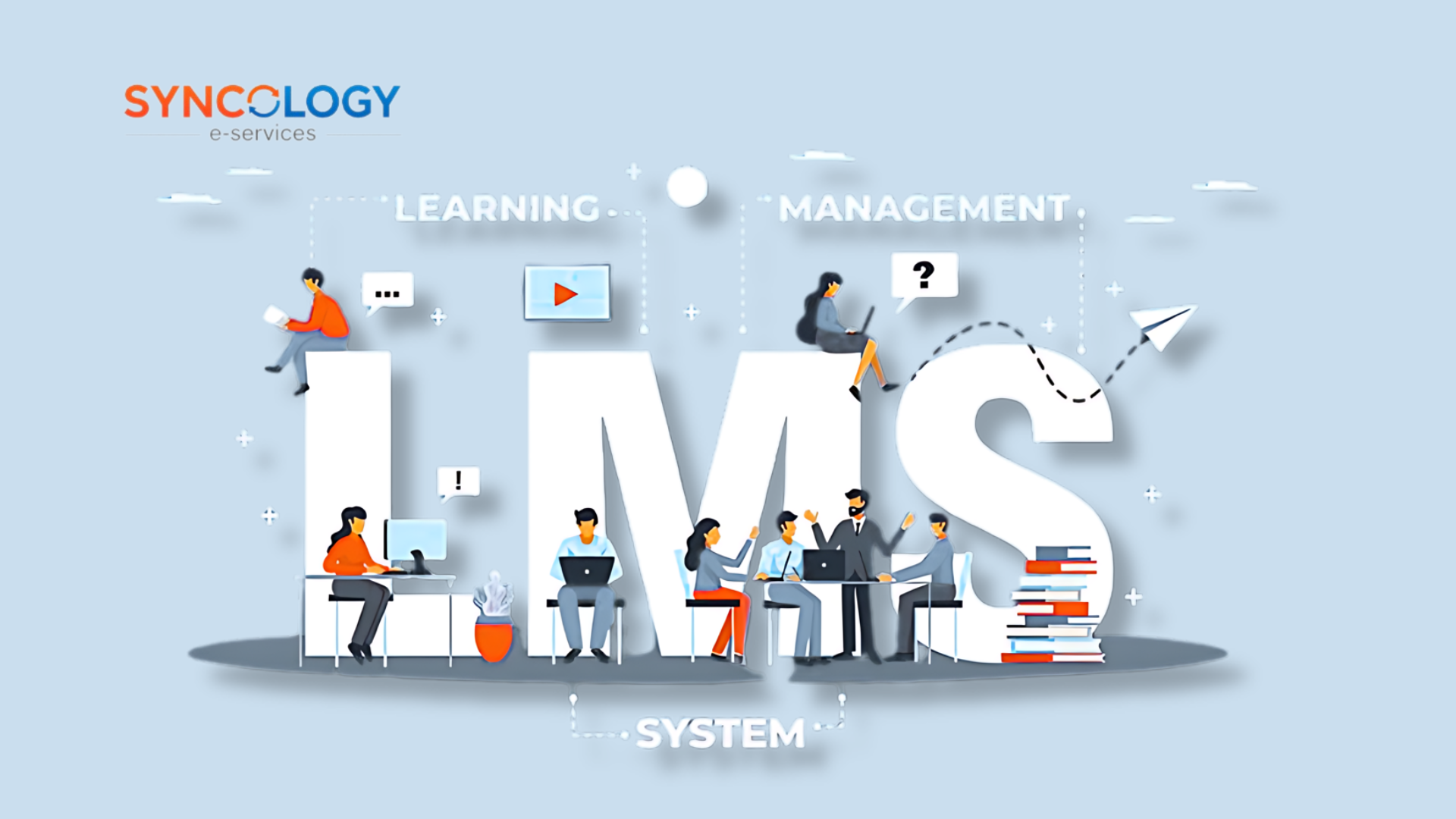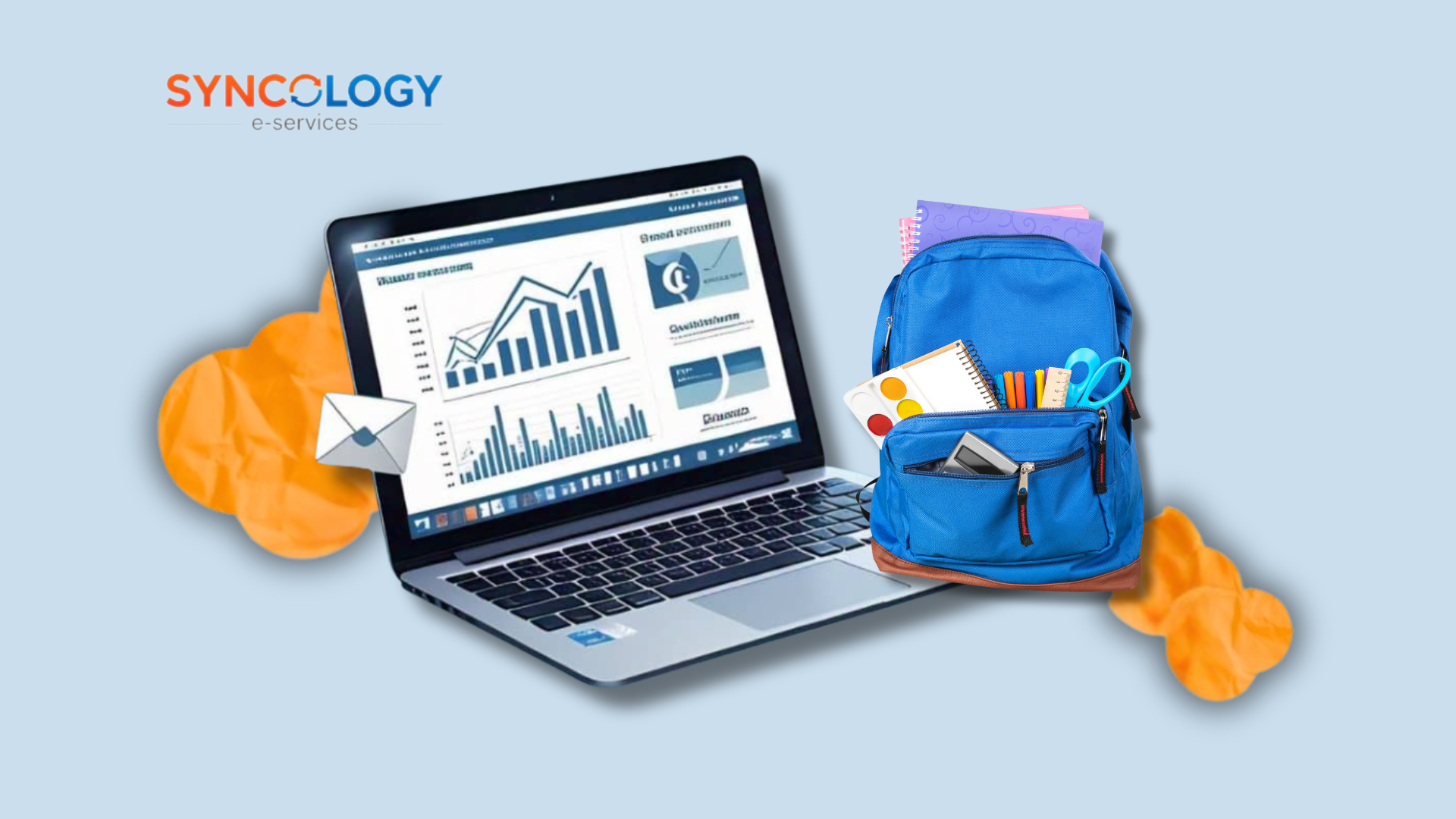
Unified Management with ERP Software for Schools
In today’s fast-changing education landscape, ERP Software for Schools has become the cornerstone of efficient and modern school management. From academic records and HR processes to finances and classroom coordination, this technology unifies every aspect of school operations under one intelligent system.
With a well-implemented school management ERP, institutions can achieve better accuracy, transparency, and productivity, all while enhancing the teaching and learning experience.
Table of Contents:
1. The Challenge of Managing Modern Schools
2. What Is ERP Software for Schools?
3. Why Schools Need Unified Management
4. Key Modules That Drive Unified Management
5. Benefits of ERP Software for Schools
6. How ERP Software for Schools Transforms Daily Operations
7. Choosing the Right ERP Software for Schools
8. Syncology’s EduSync: Unified, Scalable, and Smart
9. Conclusion: The Future of Smart, Unified School Management
1. The Challenge of Managing Modern Schools
Running a school today means balancing hundreds of moving parts: tracking attendance, managing payroll, organizing exams, communicating with parents, and maintaining campus security. Many institutions still rely on outdated tools or scattered systems, spreadsheets for finance, manual logs for attendance, and different portals for teachers and students.
This fragmentation creates inefficiency, delays, and confusion.
That’s why forward-thinking institutions are shifting toward ERP Software for Schools, a centralized educational management software that integrates every department into one cohesive, data-driven ecosystem. Instead of juggling multiple apps, educators and administrators use a single school management system to manage everything from classroom activities to financial reports.
2. What Is ERP Software for Schools?
ERP Software for Schools (Enterprise Resource Planning) is an all-in-one platform designed to streamline and automate every aspect of school administration. Unlike general ERP systems used in businesses, education ERP software is specifically tailored to the academic environment.
A robust school management ERP typically includes the following modules:
- Student Information System (SIS): A centralized database that stores student records, grades, attendance, and performance reports.
- Learning Management System (LMS): A platform that delivers and tracks online lessons, assignments, and communication between teachers and students.
- Finance and Accounting Management: For handling fees, payroll, and budgeting.
- HR Management: For managing teacher recruitment, performance, and payroll automation.
- Inventory and Asset Management: To track classroom resources, lab equipment, and school supplies.
- Communication Tools: Enabling direct messaging and updates between parents, students, and teachers.
This integration is what makes an ERP system for educational institutions so powerful; it connects academic, financial, and administrative operations into one seamless workflow.
3. Why Schools Need Unified Management
Fragmented management tools create disconnected data and unnecessary manual work. For example, when a teacher updates student grades on one platform but the administration tracks attendance on another, inconsistencies arise.
A unified management system ensures every department shares real-time information through one source of truth.
With ERP Software for Schools, data flows effortlessly between modules. When attendance is marked, it automatically reflects in the student information system and attendance management software. When a parent pays tuition, the accounting module updates instantly, syncing with the finance dashboard.
Unified management means schools no longer operate in silos; teachers, accountants, and administrators can all make informed decisions based on accurate, synchronized data.
4. Key Modules That Drive Unified Management
1. Student Information System (SIS)
The SIS student information system forms the foundation of any education ERP. It stores personal and academic data, tracks performance, and integrates with both the LMS for school and attendance management tools.
2. HR & Payroll Management
This module automates staff attendance, salary calculations, and leave management. With a connected school system management platform, HR processes are transparent and efficient.
3. Accounting & Finance
A reliable ERP school solution simplifies fee collection, expense tracking, and budget forecasting. Administrators gain visibility into every financial transaction in real time.
4. Learning Management System (LMS)
An integrated learning management system in education enables teachers to upload lessons, evaluate assignments, and interact with students online.
Schools using LMS education systems or even free LMS for schools benefit from centralized course delivery and progress tracking.
5. Inventory & Asset Management
Managing lab materials, books, and digital devices becomes easier with an online education management system that tracks resources and usage.
6. Parent & Student Communication Portals
Seamless communication is key to engagement. ERP platforms connect parents and educators through smart notifications, report cards, and announcements.
When combined, these modules make the ERP Software for Schools a single command center for all operations.
5. Benefits of ERP Software for Schools
Implementing a modern school management ERP brings measurable advantages:
- Unified Data Access: Every department – from finance to academics – uses shared, updated data.
- Automation: Tasks like attendance, grading, and payroll run automatically.
- Enhanced Decision-Making: With analytics dashboards and real-time reports, school leaders can make informed strategic choices.
- Transparency: Administrators, teachers, and parents can view relevant data anytime, improving accountability.
- Security: Centralized data storage and role-based access protect student and staff information.
- Scalability: A good education ERP grows with the institution, whether adding new branches or programs.
Ultimately, the system reduces manual errors, saves time, and allows staff to focus on what truly matters: education.
6. How ERP Software for Schools Transforms Daily Operations
Before implementing an ERP, schools often face time-consuming manual work, repetitive data entry, and communication delays.
After adoption, everything becomes centralized:
- Teachers manage grades, attendance, and lessons within the LMS system.
- Administrators track all operations via real-time dashboards.
- Finance teams monitor income, expenses, and reports instantly.
- Parents access portals for progress updates and fee payments.
For instance, a student management system ERP ensures that a student’s academic record, attendance data, and financial payments are always in sync. No more paperwork or miscommunication, just smooth, smart workflows.
This transformation not only improves efficiency; it strengthens relationships between teachers, parents, and students, promoting a more connected learning environment.
7. Choosing the Right ERP Software for Schools
Not all ERP solutions are built equally. When selecting one for your institution, consider the following:
- Scalability: Can it support multiple branches or departments?
- Integration: Does it connect with your existing school management software or LMS learning system?
- Security: Does it include encrypted data protection and user access controls?
- Customization: Can it adapt to your school’s unique processes?
- Support & Training: Does the provider offer local support and onboarding?
Avoid the common mistake of selecting generic ERP tools.
Choose ERP Software for Schools that’s designed specifically for educational workflows, such as Syncology’s EduSync, a cloud-based eSchool management system built for academic excellence and operational efficiency.
8. Syncology’s EduSync: Unified, Scalable, and Smart
EduSync by Syncology stands out as a comprehensive education ERP software designed to integrate seamlessly with all aspects of school management.
With modules for academics, HR, finance, inventory, and communication, it provides everything schools need to operate efficiently.
Key advantages include:
- Cloud-based, secure access
- Smart analytics and dashboards
- Integration with learning management systems for schools
- Real-time synchronization between teachers, parents, and administration
Whether you manage a single campus or a multi-branch network, EduSync ensures smooth coordination, making it one of the best management information systems for schools in the region.
9. Conclusion: The Future of Smart, Unified School Management
Education is evolving, and so should the way schools operate.
ERP Software for Schools isn’t just a digital tool; it’s the foundation of modern education management, by connecting every department, automating tasks, and providing valuable insights. It empowers educators to focus on learning, not logistics.
With the right partner, like Syncology, schools can embrace digital transformation with confidence.
From student data management systems to online learning management systems, EduSync offers everything schools need to run smarter, safer, and more efficiently.




